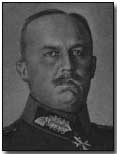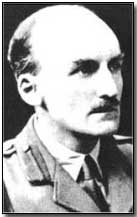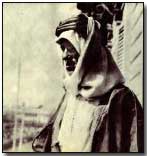The War in the Air - Ground Attack
 Ground attack is a close relative to tactical bombing. It is aimed at disrupting enemy
forces at or near the front and during the course of the battle itself.
While strategic and tactical bombing raids are planned and directed at
specific targets, ground-attack is often carried out against targets of
opportunity, as they appear on a changing battle-field. It is carried
out by strafing and by dropping small munitions such as hand grenades.
Ground attack is carried out from very low altitudes and is thus both
extremely accurate and extremely hazardous.
Ground attack is a close relative to tactical bombing. It is aimed at disrupting enemy
forces at or near the front and during the course of the battle itself.
While strategic and tactical bombing raids are planned and directed at
specific targets, ground-attack is often carried out against targets of
opportunity, as they appear on a changing battle-field. It is carried
out by strafing and by dropping small munitions such as hand grenades.
Ground attack is carried out from very low altitudes and is thus both
extremely accurate and extremely hazardous.
During the Battle of Messines, in June of 1917, British air force commander Hugh Trenchard ordered the British pilots to fly low over the lines and strafe whatever targets presented themselves. This was in order to harass the troops and break their morale. During the Third Battle of Ypres which followed, this tactic was further pursued and developed with Sopwith Camels armed with four 9kg (20 lb) bombs raiding enemy trenches and approaches. While effective, the loss rate of the attacking planes was very high.
At about the same time the Germans took delivery of the Halberstadt CL II. This was a two seater tractor aircraft intended originally as an escort fighter for observer planes. Realizing the effectiveness of direct ground attacks, flights of Halberstadt CL IIs were reorganized into attack flights (Schlachtstaffeln).
These planes were better equipped for ground-attack duties than the single-seater Allied fighters, which were particularly vulnerable to attack from above and behind, while the pilot was preoccupied with aiming and strafing. In the Halberstadt the observer provided both warning and some level of protection from such attacks, and could assist by dropping bombs or grenades.
 The
colossal, costly, and failed engagements of 1916 had led the military on
both sides to seek out new weapons and tactics to change the way in which
they waged the war.
The
colossal, costly, and failed engagements of 1916 had led the military on
both sides to seek out new weapons and tactics to change the way in which
they waged the war.
The Germans developed a new tactic of "infiltration" - the use of lightly armed, mobile elite troops (Sturmtruppen) to break through the defensive lines and fight in the rear of the front line. Ludendorff thought that the use of the Schlachtstaffeln would both aid the initial breakthrough, and help them consolidate those initial gains.
On the allied side of the front there was a willingness to rethink the use of the tank. There had been much disappointment with its performance, but by mid 1917 the British command was open to the claims of Brigadier General H. Elles, the commander of the Tank Corps, that the tank had not been used on suitable terrain.
The British launched the Battle of Cambrai on the 20th of November 1917, attacking across dry and chalky ground, and using tactics developed by Lieutenant Colonel J. F. C. Fuller, the Tank Corps Staff Officer.
Fuller had coordinated three elements into his battle plan: an improved artillery system, massed tanks (over 320), and coordinated ground attack by 300 aircraft from fourteen RFC squadrons. The planes attacked trenches, supply convoys, artillery emplacements and other front line installations.
They were highly effective, at times even saving the tanks from being pinned down. But the cost to the airmen was high. The German infantry had learned how to fight back against low flying aircraft, and once air reinforcements arrived the loss rate of ground attack aircraft was as high as 30 percent of aircraft deployed. Entire squadrons were wiped out in less than a week.
On the ground, the initial success of the attack was so great that victory bells were rung in Britain for the first time since the beginning of the war. But the celebration was premature. The attack became bogged down, and the German's counter-attacked.
 It
was during this counter-attack that Ludendorff used his new infiltration
tactics, and to great effect. The spearheads of the Sturmtruppen
were accompanied by carefully coordinated ground attacks, the pilot strafing
and the observer dropping grenades. They were so effective that a
British Court of Inquiry found that the Schlachtstaffeln were one of
the major causes of the success of the German counter-attack.
It
was during this counter-attack that Ludendorff used his new infiltration
tactics, and to great effect. The spearheads of the Sturmtruppen
were accompanied by carefully coordinated ground attacks, the pilot strafing
and the observer dropping grenades. They were so effective that a
British Court of Inquiry found that the Schlachtstaffeln were one of
the major causes of the success of the German counter-attack.
The RFC learned a number of important lessons at Cambrai. British pilots, taking a leaf from the French, improvised better camouflage so as not to be so visible to defending fighters: in particular the twin bright roundels on the upper wing provided an easily visible and effective aiming point. (One simply had to aim between them to target the pilot.)
Sopwith began developing an aircraft specially designed for the needs of ground attack warfare - its most significant feature being armour plating to protect the pilot. This became known as the Sopwith Salamander.
In May of 1918 Fuller began developing plans for the next year of combat. This became known as "Plan 1919." Hailed as the precursor of the "Blitzkrieg," one of the keystones of the plan was integrated ground attack using the Salamanders. Large scale production was underway at the time of the armistice, but in practice the Salamander never saw combat.
When the Germans launched their final great push in March of 1918, they placed such an emphasis on ground attack that it was considered to be the most important task of the German planes. Flying Halberstadt CL.II, the improved Halberstadt CL.IVs, and the specialist all-metal Junkers J1, they initially enjoyed tremendous success.
For their part, the allies found it hard to perform ground attack duties, and indeed found it hard to coordinate their air power at all, because they needed to evacuate seventeen of their forward airfields. But by late March they had reorganized and began to inflict heavy losses on the German airforce.
 By
the time of the last German offensive, in mid July, shortages of pilots,
aircraft and gasoline meant that their was little air support. In a
mirror image of the battle of Cambrai, the Allied counter-attack was
strongly supported by coordinated ground attack.
By
the time of the last German offensive, in mid July, shortages of pilots,
aircraft and gasoline meant that their was little air support. In a
mirror image of the battle of Cambrai, the Allied counter-attack was
strongly supported by coordinated ground attack.
Perhaps the most dramatic use of ground-attack occurred in Palestine. By September of 1918 the British had complete control of the air, largely through the efforts of the First Squadron, Australian Flying Corps, flying the excellent two seat Bristol F2 Fighter and a single Handley-Page O/400. (Ross Smith, who later won the 1919 England-Australia air race, was one of the pilots of this squadron.)
Following the success of Allenby's attack at Megido on the 19th of September, the Turkish divisions were forced to retreat through the narrow defile of Wadi Farra. On the 21st of September the Australians trapped them there, when they bombed the head and the tail of the Turkish column. Together with RAF SE5as and DH9s the Australians mercilessly bombed and strafed the terrified Turks.
In the words of T. E. Lawrence, "When the smoke had cleared it was seen that the organization of the enemy had melted away. They were a dispersed horde of trembling individuals, hiding for their lives in every fold of the vast hills. Nor did their commanders ever rally them again. When our cavalry entered the silent valley the next day they could count ninety guns, fifty lorries, and nearly a thousand carts abandoned with all their belongings. The RAF lost four killed. The Turks lost a corps."
Article contributed by Ari Unikoski
Photographs courtesy of Photos of the Great War website
Next - Naval Warfare
The German word "U-Boat" was derived from "Unterseeboot" (undersea boat).
- Did you know?
